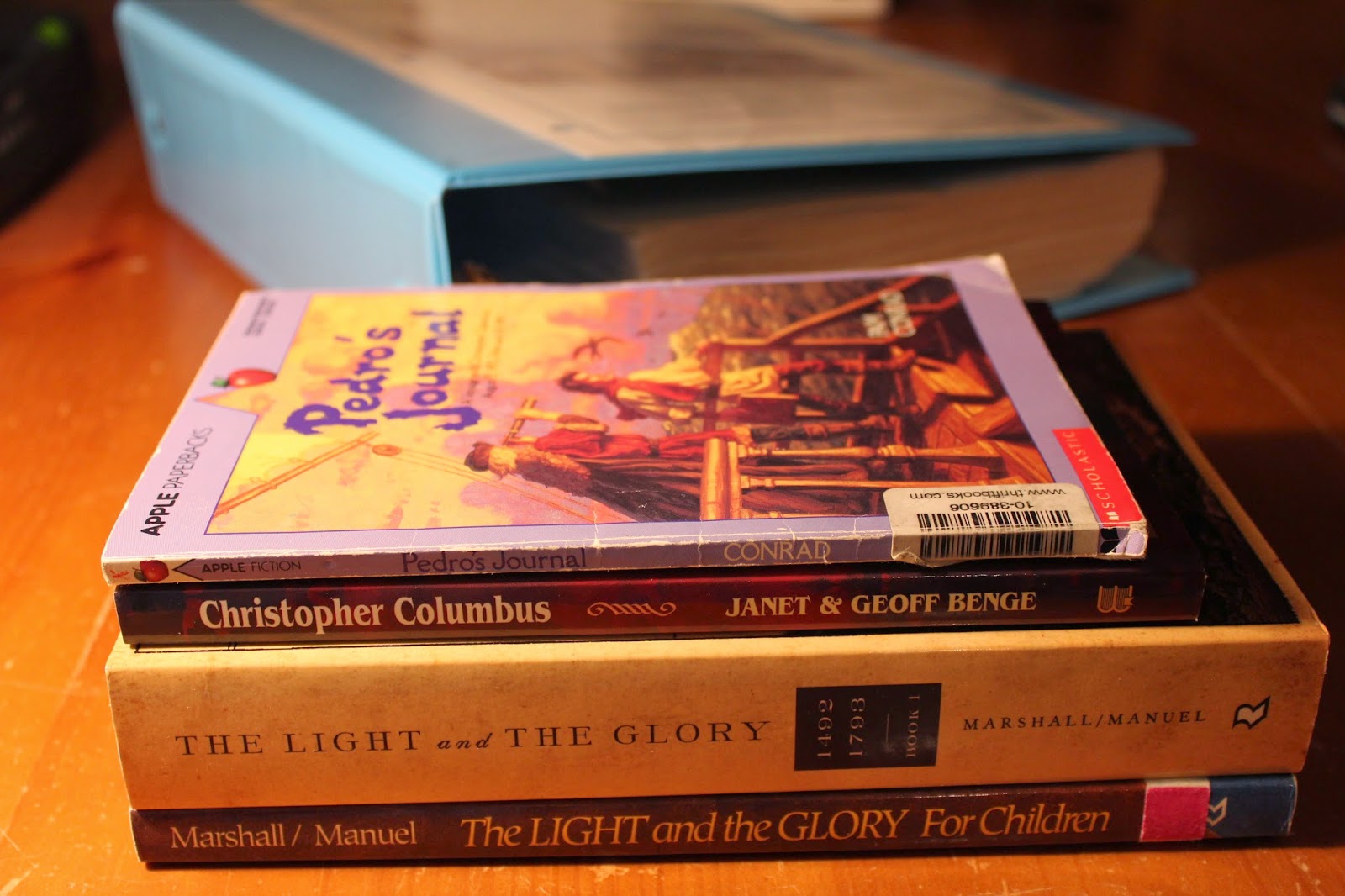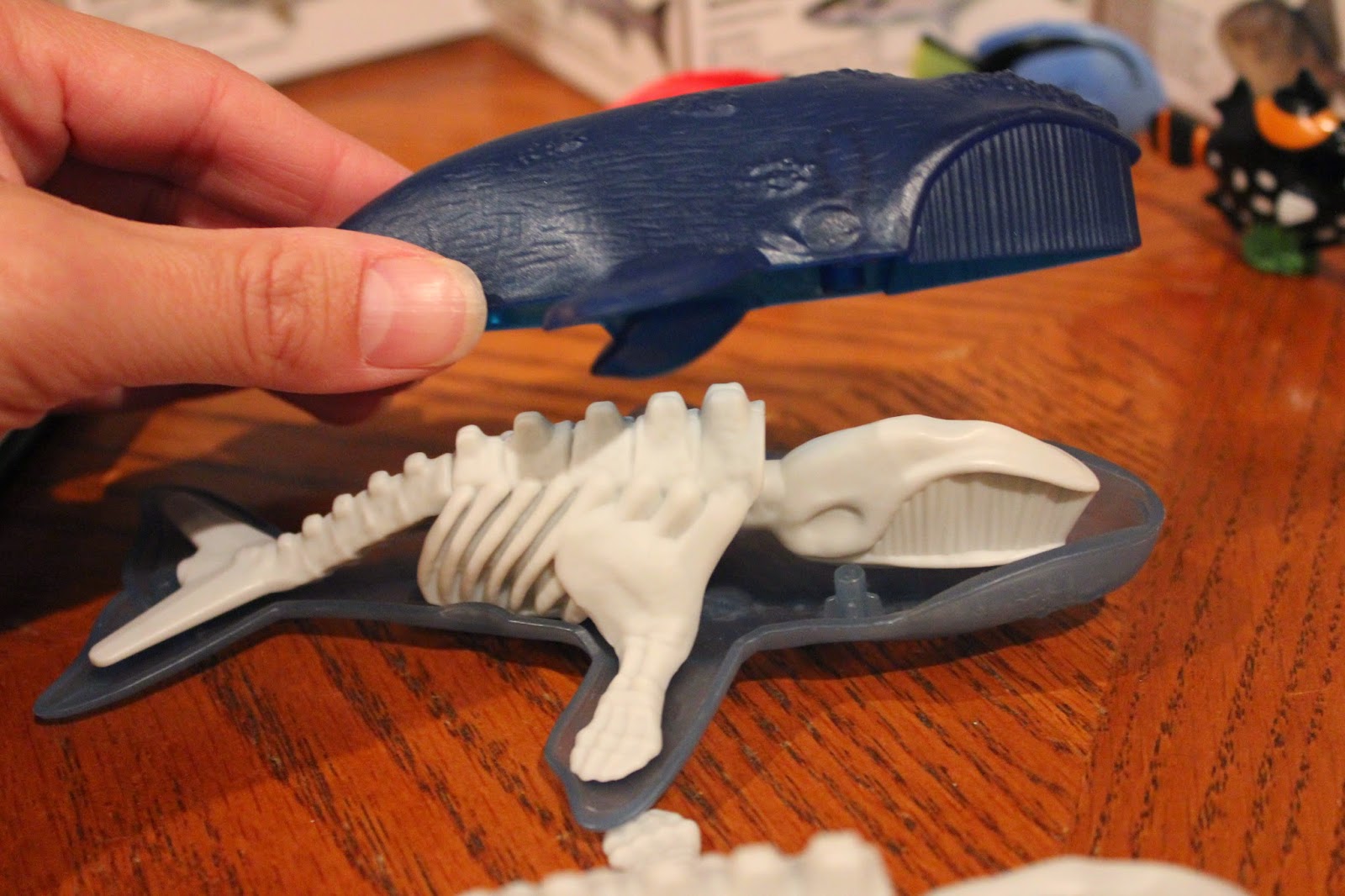I've been asked by several homeschool moms how we go about our organic learning. Each time I'm asked, I try to put it in a nutshell, but I find that impossible to do in a short discussion. It's a bit like trying to wrap up the history of the world in one simple paragraph. It cannot be done. Over this weekend, I was reminded of that again. I met a sweet new friend who is new to the homeschooling world. We began to talk about styles of homeschooling, and I explained a bit about what we do. She seemed interested, but as we only had about 15 minutes to talk, I probably left her with many more questions than answers.
I think the most effective way to explain what we do in our home is to SHOW it as it unfolds. So, as we begin this new school year, I am going to try to be more frequent in blogging about our weeks. This will not be a record of the most talented or best homeschool but rather simply a look at a real homeschooling family who is going about things in a nontraditional way. So, for those of you who have wanted to see exactly what this thing looks like, I hope to have that for you as we move through the school year.
For now, let me break the surface.
What exactly do I mean by organic learning? For us, we think of it very similarly to organic gardening. We try to set up an environment and atmosphere where learning can take place (just as we cultivate the soil to get it ready for plants). We try to provide living books and intriguing resources that stimulate learning and discussions, and we use textbooks only when necessary (as a gardener focuses mainly on organic material and avoids most synthetic material). There is a general structure in our school year, just as a gardener drops certain seeds at certain times of year or as he provides guide wires for climbing vines. But there is enormous freedom in the interests we pursue, the information we choose to dig deeper into, the discussions that turn into passions...just as a garden bursts forth with an array of vegetables, fruits and flowers of our choosing.
Here's one huge reason why I love organic learning. The UPS guy is met in the front yard by excited children (sorry...no photos of that...photographer is slacking). The huge box is hefted onto the kitchen counter, and they beg me to open it. Really. There are no toys or games in this particular box. Just books. Excellent books.
Because our children have spent the past several years reading living books, they truly are excited when new shipments of books arrive on our doorstep. There is an anticipation, wondering what adventures await inside.
Our organic learning begins with a "spine" of sorts. This is the basic structure that will give us a compass to guide our journey through the school year. We use history as our spine. We study history, pulling in geography, science, writing, etc that relate to each time period or subject we encounter in our reading. This particular year, we are going to be studying U.S. History, and we simply adore America: An Integrated Curriculum. This will be our second time through it. This curriculum can be used in different ways. It covers nearly every main "subject" and can be followed word-for-word, OR you can pick and choose what you do.
 |
| A list of the books we will be reading in the first few months of the school year |
We pick and choose what we love from the curriculum suggestions. This week, for example, we will be beginning The Light and the Glory for Children, which I will read aloud while the children listen. Our high schooler will read the adult version of this book independently. The curriculum suggests that we read Pedro's Journal, but since we didn't particularly like that book (and found some things in it that were not very accurate), we have decided instead to read an interesting biography about Christopher Columbus.
We will also be following the curriculum's suggestion to learn the words to My Country 'Tis of Thee (America), as well as discuss its literary form.
But we also have some wonderful books and resources that we can look through. These are not textbooks for us. We use them as supplemental let's-see-what-awesome-things-we-can-learn-about-in-this-book.
The best books are living books...ones that make the subject come alive. This particular book is very conversational.
I switched up our science table to reflect what we will be reading about this week. So, out came the ocean creature replicas, a handful of sea shells, and some of the books about oceans and ocean creatures. Any time the science table is switched up, it's like a magnet. Little hands will explore without me saying a word. Learning really IS fun.
I love this manipulative! It's a whale that can be popped open to reveal the bone structure inside.
Really great stuff. AND it can go in the bath (big bonus for the kiddos)! AND it was a free toy in a kids' meal at Burger King a couple of years ago. Yay for the rare kids' meal toy that is worth keeping!
And here we take the whole study local. We start with Christopher Columbus sailing to the Americas in the 1400's...then we study a bit about oceans and ocean creatures...and we tie in the local aspect of which fish are common in this particular area of the country. It all flows.
After all, life is not in neat little boxes or "subjects." Life flows. So, organic learning flows.
If you are creative and spontaneous, you will find this flow to be quite easy and natural. If you are more of a by-the-book kind of person, then you can find great confidence in knowing that certain integrated curriculum (such as America: An Integrated Curriculum as well as curriculum from Sonlight) has exceptional instructor's guides that will guide you seamlessly as you integrate all "subjects" together in a flow that is meaningful and fun. You don't have to know it all in order to provide a very rich educational journey for your children. By-the-book parents can grab the instructor's guide and feel very comfortable knowing that today's lessons are all laid out. Spontaneous, creative parents can use the same instructor's guides and simply pick and choose what they like and then go off on creative sprees that they or their children choose.
And, given the opportunity, children WILL be creative. Learning is actually fun when we let it happen organically instead of forcing it with synthetic methods. Here's one example of some creativity during the last week of summer. (Yes, learning happens all summer too! Given freedom and resources, children will really choose to learn and create ALL the time.)
So, last week, I walked outside and was greeted by this interesting contraption. Heres' the front view...
Here's the side view...
I knew it housed boys, because I could see little clues...
The boys were excited that I had come to investigate, and they told me all about their new adventure. Apparently they had decided to spend the entire morning outside, "living in the wild like olden days." They had built their own dwelling, complete with several rooms and a long tunnel that led to a secret back entrance. Their goal was to live outside until the afternoon.
I surprised them with lunch, delivered to the door of their humble abode.
They were excited to show me something new they had discovered. Both boys grabbed big rocks and used smaller, sharper rocks to "write" on the bigger rocks.
I received detailed instruction about how to carve letters into rocks. They had discovered this when they were living outdoors and trying to figure out how they might have communicated if they had lived many centuries ago.
Here you see the letter "M."
And here you have the letter "T."

























